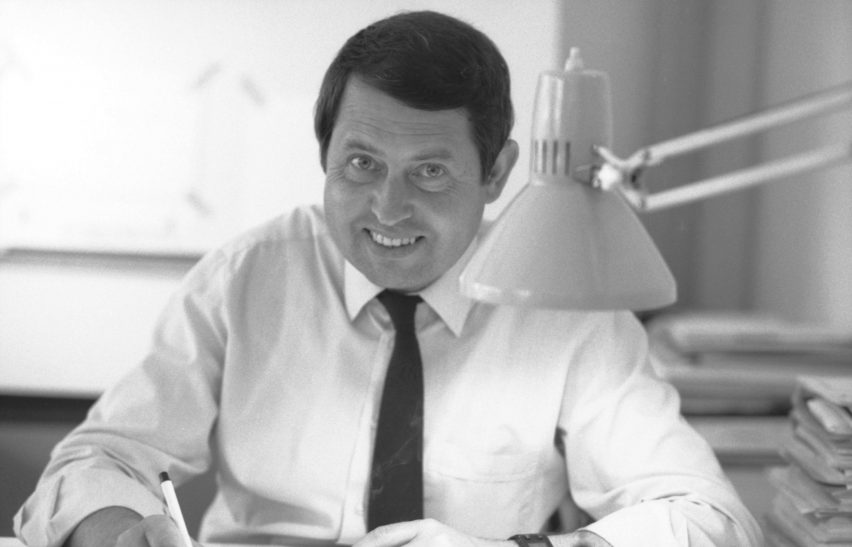
Braun philosophy is about "reducing the bling-bling" says designer Dietrich Lubs
A protégé of Dieter Rams, Dietrich Lubs was responsible for some of Braun's most influential products. As Dezeen and Braun launch a limited-edition collaborative watch, he speaks exclusively about his minimalist approach and explains why he was happy for Apple to repurpose his designs.
Lubs joined the Braun team in 1962, only the year after Rams was appointed head of design. The German industrial designer later become deputy head of design for the brand, and was behind iconic designs such as the 4861 wall clock, the AW 10 wristwatch and the ET 55 calculator.
According to Lubs, the enduring popularity of his products is the simple, functional style – which follows Rams' Ten Principles for Good Design.
"The Braun philosophy was about reducing the unnecessary bling-bling details," Lubs told Dezeen. "This approach was applied across all Braun products, from clocks to hi-fi systems, as well as kitchen and haircare products."
"The philosophy at that time was really nice, rather than being about making everything bigger and bigger," he said.
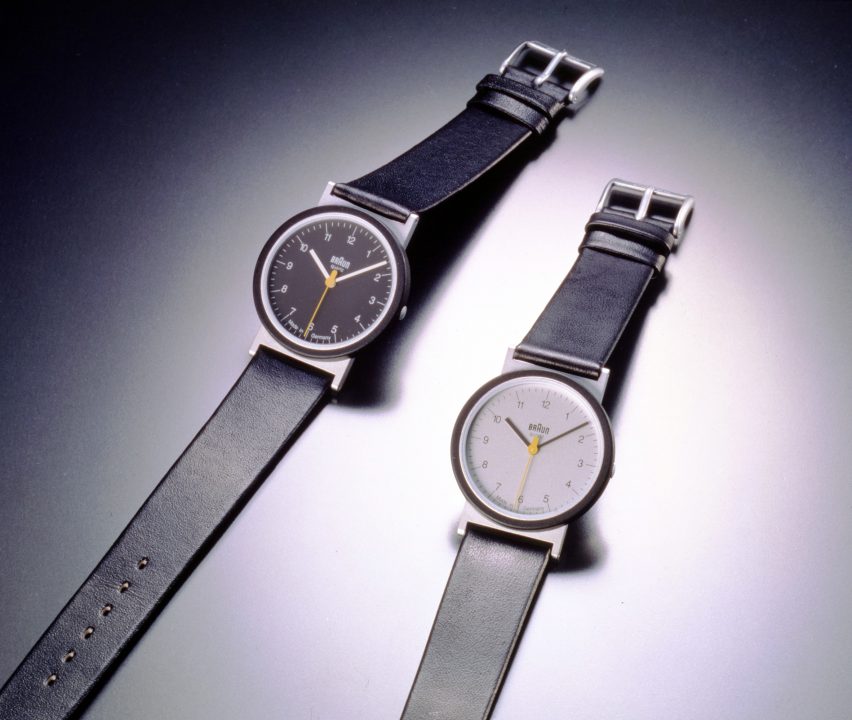
Lubs left Braun in 2001, but is once again working with the brand to update some of his celebrated watch designs. The new collection includes the BN0031 – which takes inspiration from the AW 10. Dezeen has teamed up with Braun to launch a limited-edition version of the BN0031, which comes in blue.
The designer believes that, 45 years later, these watches are better than most other watches on the market.
"They are minimalist and they have real character," he said. "You can see they were made in the 70s and they still have the spirit of that time."
"When you looked around at the stands at Baselworld this year, 90 per cent of the products had no character. Very few manufacturers make good watches now."
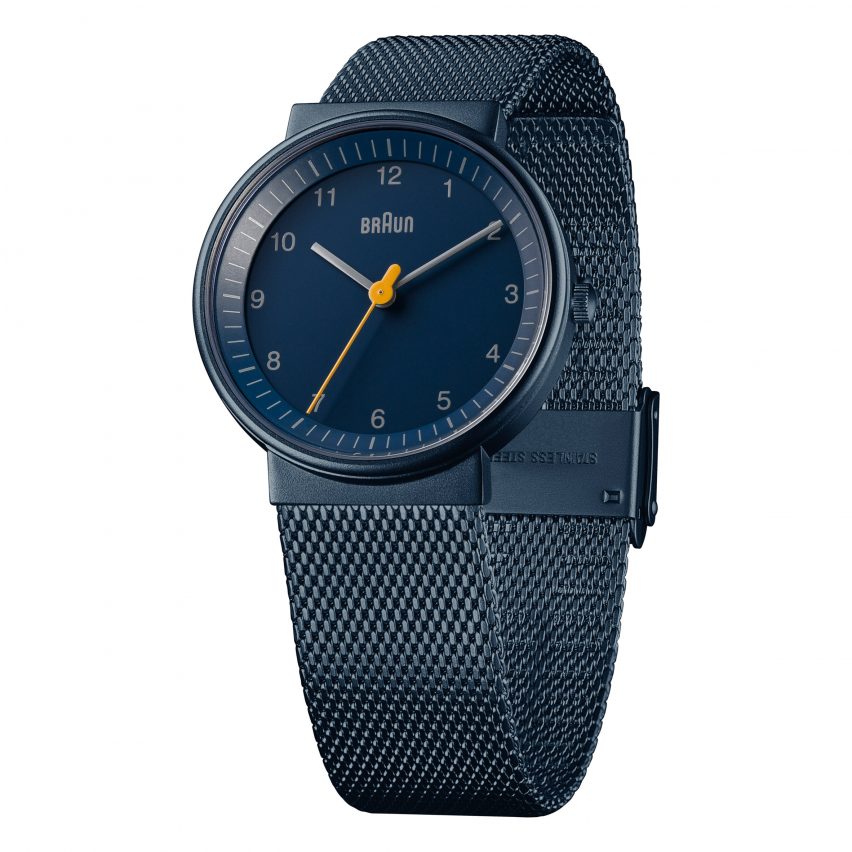
The watches aren't the only Lubs designs to resurface in recent years. The calculator app on the early iPhones was based on the ET 55, which Rams and Lubs designed together, and which is included in the permanent collection of MoMA in New York.
Lubs says he approved, particularly because Apple asked Rams for permission first.
"They wanted to use the designs produced between 1960 and 1980 no later. And that's the important thing, to come back to the roots," he said.
"I'm happy that they use these designs because it makes me think back to the time when we designed them."
The designer also revealed he would like to follow in Apple's footsteps, by designing a smartwatch. But unlike the Apple Watch, Lubs said his would be as simple as possible, with a digital interface and a very limited number of functions.
"I think it would be wonderful if I could design a smartwatch," he added. "It would look like the DW 30 I designed for Braun. It would have a display that clearly shows that it is a digital product."
Read on more the full transcript of our interview with Dietrich Lubs:
Alyn Griffiths: When you were approached to return to Braun, what made you decide to take up the offer?
Dietrich Lubs: I was contacted by Zeon [the current licensee of Braun's watches] because they were receiving requests from the market, from consumers who remembered these watches from the 1970s and wanted to see them again. When Zeon got in touch we agreed to work together and cooperate to do some products in exactly the same way they were done in the past. We were focusing on the AW 10 and AW 50, which came from 1972.
Alyn Griffiths: Tell us about your time at Braun, working with Dieter Rams. What was it like working with him?
Dietrich Lubs: I began to work with Dieter Rams in 1962 and continued for 40 years. He is my friend and I am still in contact with him today. Our working relationship was very strong, very friendly and it was a nice time in my life. He liked my work and that is a fine thing in the life of a designer.
We worked independently under the umbrella of Rams and had a lot of individual freedom to work on our own projects. Of course, Rams coordinated everything – he had control – but we worked on our own. It was a nice kind of controlling, very friendly and we felt on the same level.
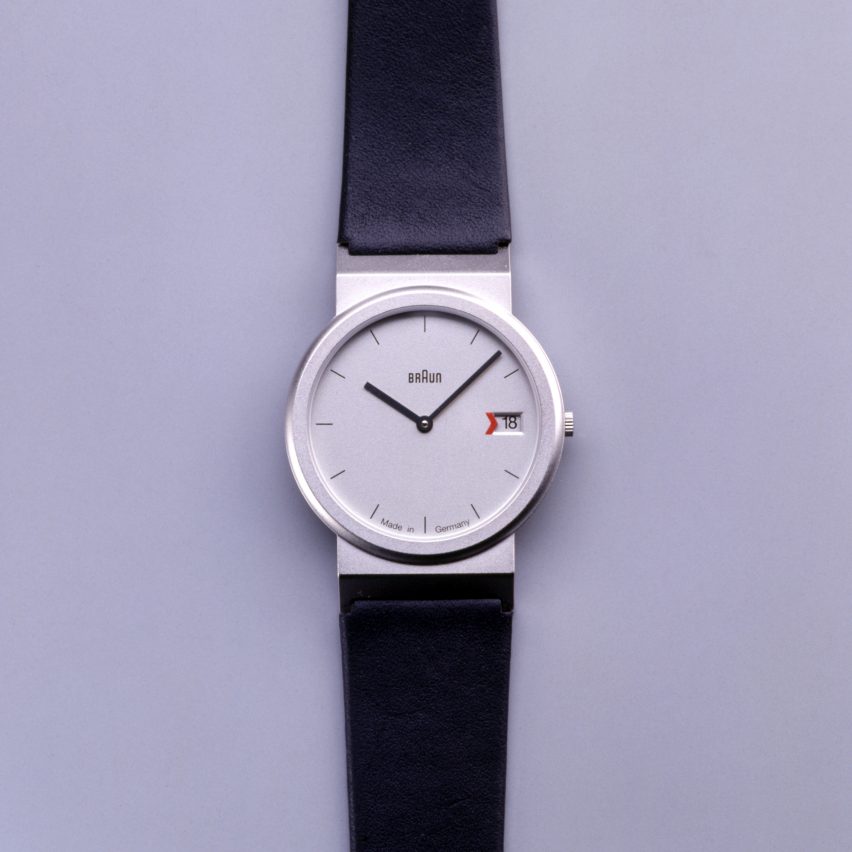
Alyn Griffiths: What do you think it is about your Braun designs that continues to resonate?
Dietrich Lubs: The Braun philosophy was about reducing the unnecessary bling-bling details. This approach was applied across all Braun products, from clocks to hi-fi systems, as well as kitchen and haircare products.
The philosophy at that time was really nice, rather than being about making everything bigger and bigger.
Alyn Griffiths: Can you tell us a bit about your design process? How has it changed compared to when you first worked at Braun?
Dietrich Lubs: What has changed from the past is that everything now is all smooth, not so geometric, and it is very colourful. In the past we had two colours, that's all! There was black and white and a bit of metal. I prefer strong geometry, and reduced, functional design.
Alyn Griffiths: Do you think we should still be designing things with more of a focus on pure functionalism, or is it okay to make products that are colour or ostentatious?
Dietrich Lubs: From my personal point of view, I have a problem with this. I stay focused on clear, reduced, geometric forms and reducing colour. The graphic of clocks and watches, in particular, should be clear and not use a lot of fonts. I only ever used one font, Akzidenz-Grotesk, for the dials of all the clocks and watches I designed.
Alyn Griffiths: What product or products are you most proud of designing in your career?
Dietrich Lubs: I have designed a lot of products. In the beginning, the ABR 21 clock radio was a nice product. Also, later, the first radio-controlled clock, the DB 10 is one of my favourites. It has a door like a calculator so you can open it and programme the time and alarm. The fact that it was radio-controlled made it unique in the market. Also, the LCD display and the font on the display was our own design. It was a hi-tech product at the time.
Alyn Griffiths: When you worked at Braun, did you place a lot of emphasis on finding uses for new technologies?
Dietrich Lubs: Yes, new technologies were important. Also for other clocks, like the AB 30 and the travel clocks we designed with infrared and voice control. It was important not just to constantly update previous designs, we were always looking for new ideas and technologies. There was a very strong relationship at Braun between the technical people and designers.
Alyn Griffiths: Are there any designs you would like to go back and change?
Dietrich Lubs: No. It's all my work so I can't answer that…
Alyn Griffiths: Dieter Rams is very well-known today, but people talk much less about the work you did for Braun. Do you feel you deserve more recognition?
Dietrich Lubs: I think in term of the work, that's right, but these products were designed together and you can't separate these things.
Alyn Griffiths: What products do you admire? Are there any designers or companies working today you are particularly inspired by?
Dietrich Lubs: There are many well-designed products in the household, in furniture, architecture. I can't pick out one or two. I must look in the world for all nice things and I see a lot of good design. New ideas come from my view of the world, from consumer products by different producers. I must keep my eyes open for all things that reduce things to a good solution. I see a lot of things and I'm able to filter out things I like.
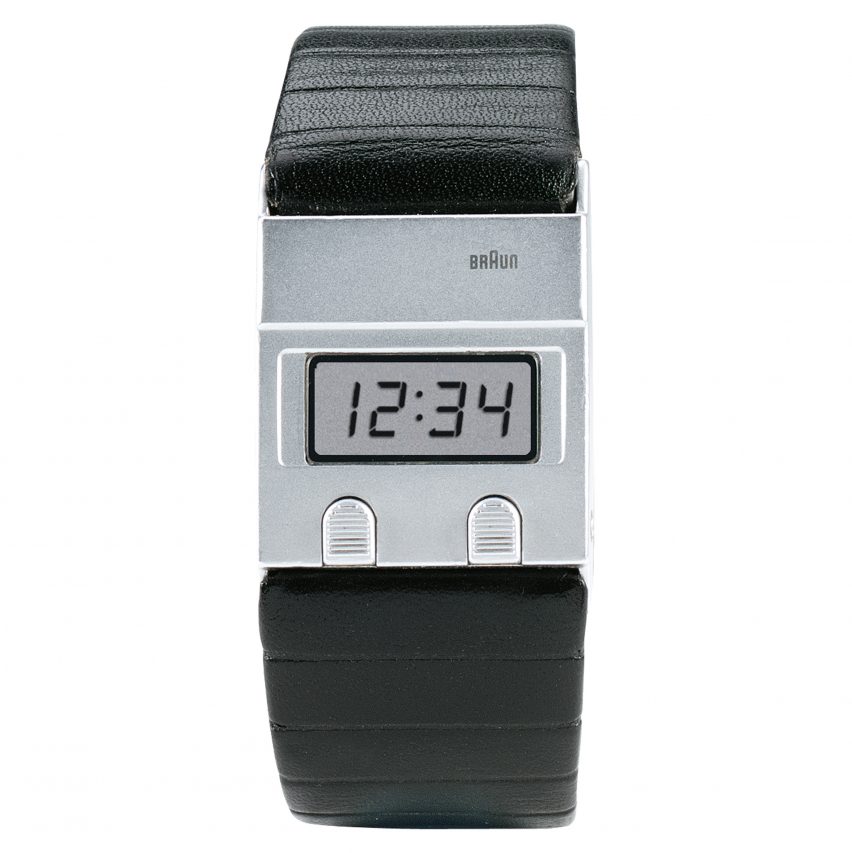
Alyn Griffiths: Tell us about the clocks and watches you worked on. What was special or innovative about each one?
Dietrich Lubs: The character of these designs is very Braun, which means they are very basic in terms of their style. The designs were also completely new and unique compared with anything else on the market at that time – we are talking about the beginning of the 70s. And they always used quartz mechanisms, whereas many of the other manufacturers came from mechanical matches and put it quartz movements – it's different in the way they look.
I like the functional outlook and there is no overload. They are absolutely clear and there is nothing unnecessary in the design.
Alyn Griffiths: How does it feel to see these designs being revived?
Dietrich Lubs: It's very nice for me to come back to something from more than 30 years ago, it makes me feel younger! It helps me to remember what it was like in the 70s.
Alyn Griffiths: Why do you think the watches you designed so many years ago are still popular today?
Dietrich Lubs: They are minimalist and they have real character. You can see they were made in the 70s and they still have the spirit of that time. When you looked around at the stands at Baselworld this year, 90 percent of the products had no character. Very few manufacturers make good watches now. The character of these designs come from inside me, this is the work of the designer. You can see my ideas and my insight in the products.
Alyn Griffiths: What changes have you had to make to the products for today's market?
Dietrich Lubs: They will look like the originals, so you won't see a difference from the models produced in the 70s. That was my one wish, that I can control this work so it is absolutely compatible with the old models. Of course, we had to create new quartz movements to make them more reliable. They are also made in Germany, just like the originals.
Alyn Griffiths: What will the watch of the future look like? Or will watches disappear?
Dietrich Lubs: No, I don't think watches will disappear. The market is too big and there are so many people who want different things. People should be able to buy and like what they want.
Alyn Griffiths: What do you think about smartwatches?
Dietrich Lubs: I think it would be wonderful if I could design a smartwatch. It would look like the DW 30 I designed for Braun. It would have a display that clearly shows that it is a digital product.
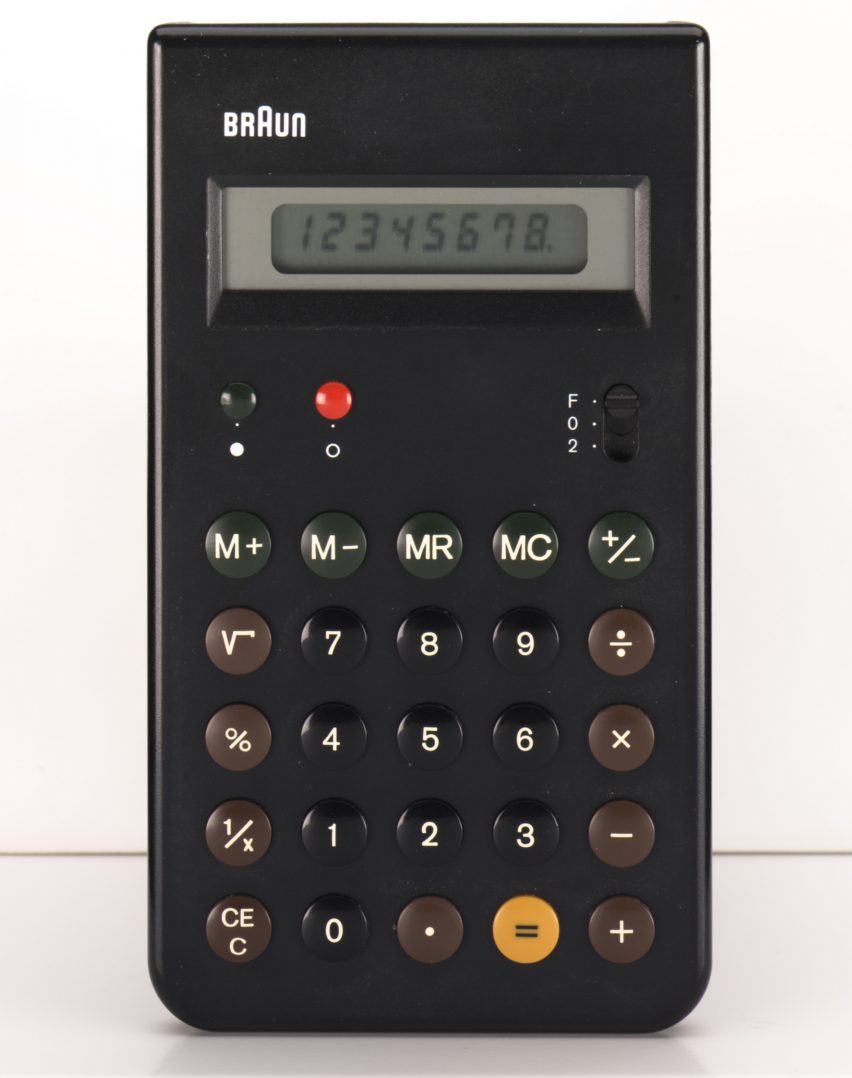
Alyn Griffiths: You also worked on many other successful products including the ET 55 calculator, which is part of MoMA's collection. Tell us about that. What was innovative about it?
Dietrich Lubs: The ET 55 was a nice project. It was an experiment to try to design a better calculator. We wanted it to be thinner than other products on the market and to use a LCD display. It was the same situation as with the wristwatch – we said let's make something minimal, without too many functions. Other products on the market had lots of functions but ours was designed only for business.
A very important point was the distance between the buttons and we realised that the concave buttons on many existing products were not good so we made them raised instead. For me it was a great solution and it informed several subsequent designs. One I particularly like in the ETS 77 with solar cells. It has no batteries so it is a product with a long life.
Alyn Griffiths: Lots of people have noticed the influence your watches and calculators appear to have had on Apple. What do you think about that?
Dietrich Lubs: Yes, this is correct. One of the iPhones designed by Jonathan Ive comes with a calculator function that was translated directly from the Braun calculator. Ive contacted Dieter Rams and they discussed it and he said they wanted to use these old designs. They wanted to use the designs produced between 1960 and 1980, no later. And that's the important thing, to come back to the roots. I see no reason to change. I'm happy that they use these designs because it makes me think back to the time when we designed them.
Alyn Griffiths: What else are you working on?
Dietrich Lubs: At the moment, I am focused on the collaboration with Braun on the AW 10 and AW 50, and in the future I will design the AW 50 Evo, a modern evolution of the product, but again with no bling. It will also be a strong Braun design with my philosophy.